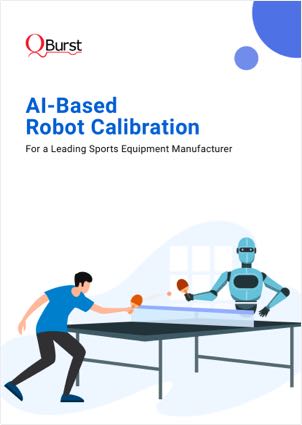Share your requirements and we'll get back to you with how we can help.
Thank you for submitting your request.
We will get back to you shortly.
AI-Based Robot Calibration
Client
German multinational corporation that creates a wide range of sports equipment and accessories for players, both professional and recreational. As a regular sponsor at the Olympic Games and multiple international competitions, clubs, and athletes, our client is one of the most visible sports equipment manufacturing brands in the world.
Industry
Sports and EduTech
Offering
QBurst was tasked with improving firmware performance. The project would focus on enhancements to the calibration mechanism of robots leading to improved gameplay and user satisfaction. The client wanted the calibration mechanism to be easy to use and repeatable.

